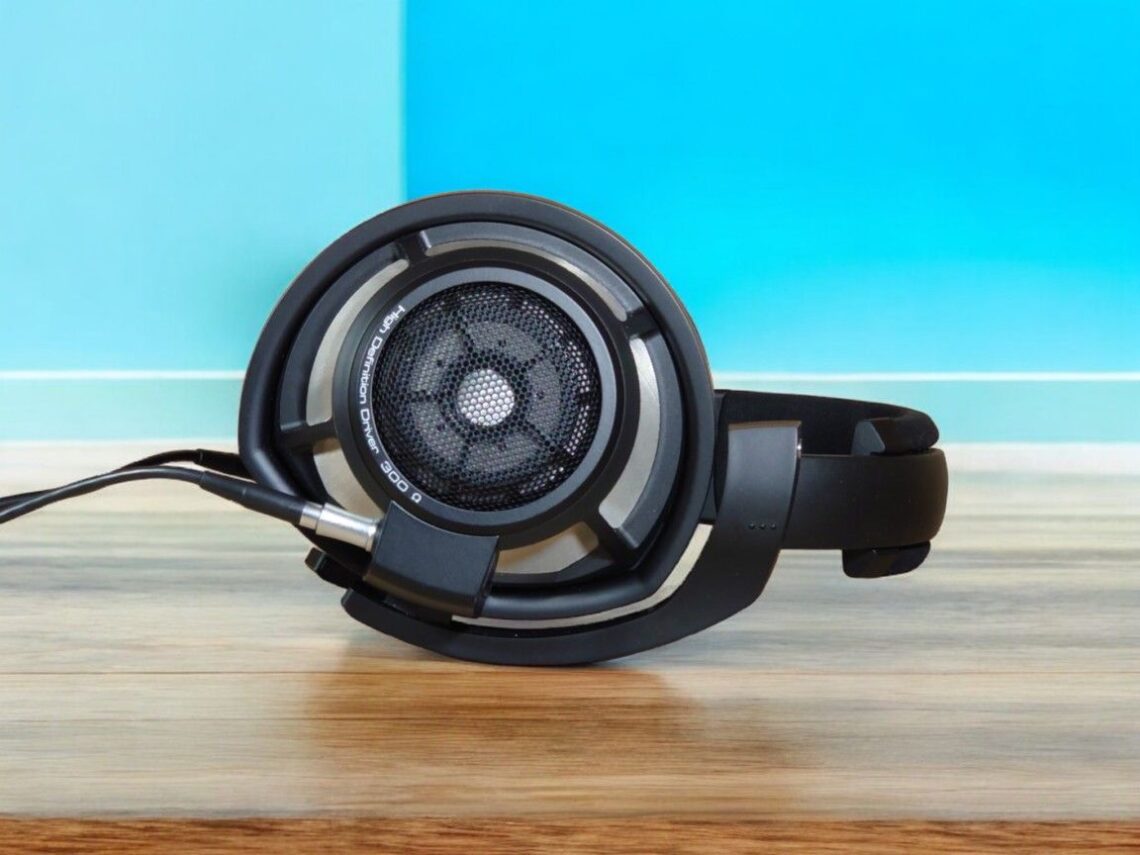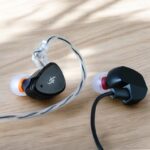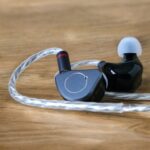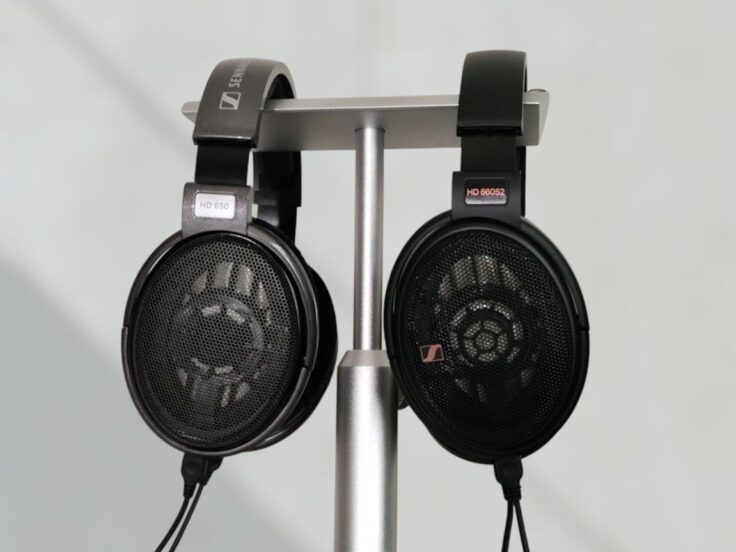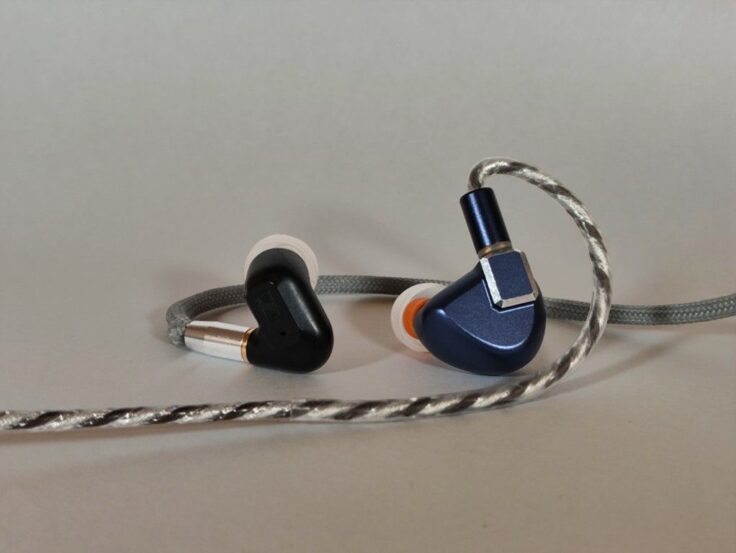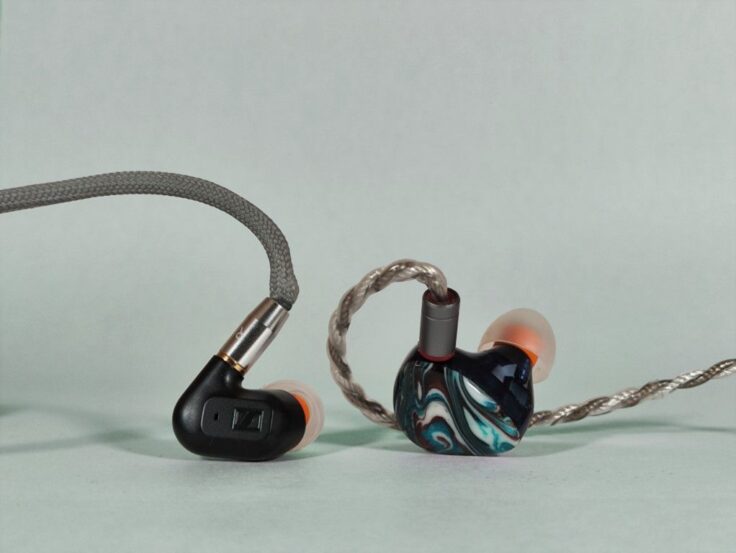The HD800 and HD800S are among the most significant high-fidelity headphones ever produced. Released in 2009, the HD800 set a new standard for detail retrieval, soundstage size, and overall performance, establishing itself as a benchmark in the world of personal high-end audio. Nothing came close, arguably with the exception of electrostatics, which cannot be used with normal amplifiers.
Sennheiser’s approach was unique, featuring an unusual ring-shaped driver and an unprecedented housing design. Soon after the HD800 was launched, the Audeze LCD-2, Hifiman HE-6, and Beyerdynamic T1 came about, and these four headphones in many ways launched the modern era of headfi.
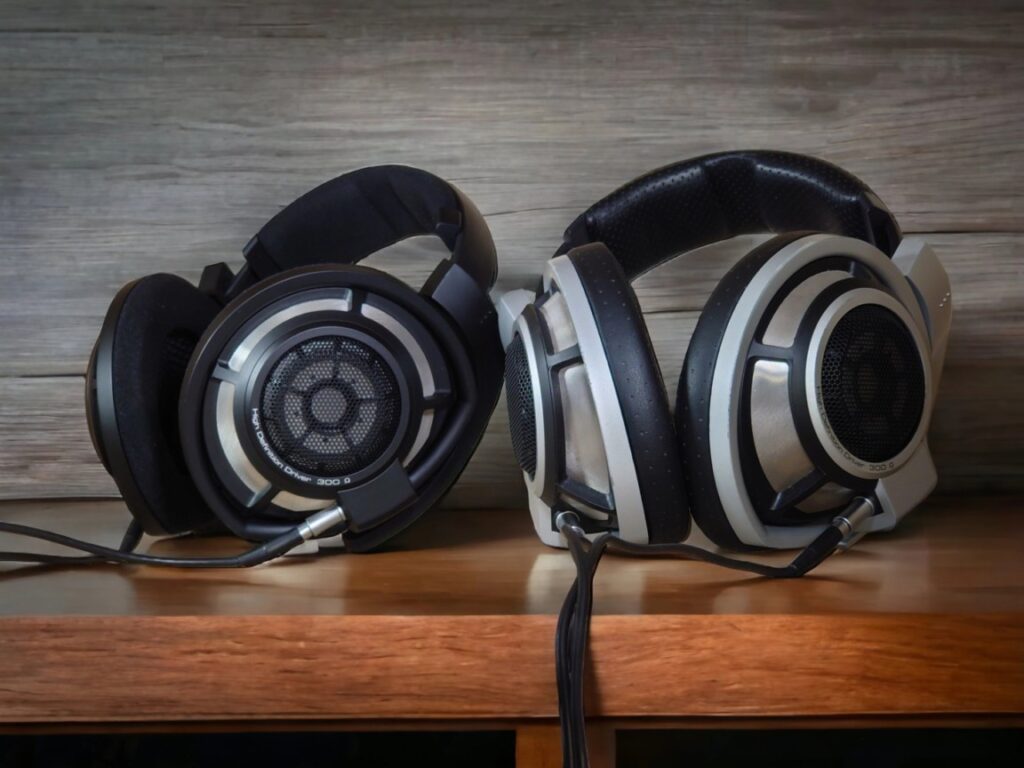
However, even if it was the most detailed and spacious-sounding conventional headphone in production, there was a problem with the HD800. Many listeners found it “clinical”-sounding, and the HD800 soon got a reputation for being too bright, with an infamous piercing treble peak.
Discussions about amplifier-matching ran hot on the forums. Cables and sources too, of course. Sennheiser even chose to make an amp themselves to accommodate the difficulties and released the silver-coloured HDVD600/800 (without and with an onboard DAC, respectively) launched in 2013. When I tested it, I concluded that Sennheiser had made the perfect amplifier for the Beyerdynamic T1, but not so much for the HD800. Sennheiser has since upgraded their amplifier, and the current version is the black HDVD820, introduced in 2017.
Even though the right amplifier, source, and cable helped alleviate the issues and make the HD800 sound warmer and smoother, it seemed impossible to get completely rid of the notorious treble peak.
The community set out on a mission to mod the HD800 to perfection. However, there were always tradeoffs, especially in terms of lost soundstage size.
Finally, Sennheiser decided to do their own “mod” and released a rather sophisticated and elegant solution in the successor, the HD800S. Launched in 2016, it was almost identical to the HD800, with the exception of the black colour and, very importantly, some strategically placed material in the ring driver’s centre. To tiny pieces of material were introduced: a ring-shaped material closer to the ear, which is the top of the hole, and some black material on the bottom. Together with the hole in the plastic grid/frame covering the driver and sustaining the protective mesh, this creates a simple cylindrical container with a hole on top. The small container becomes a strategic resonance chamber, known as a Helmholtz resonator.
Here are four close up pictures of the HD800S, along with an image of my HD800 equipped with the SDR module.
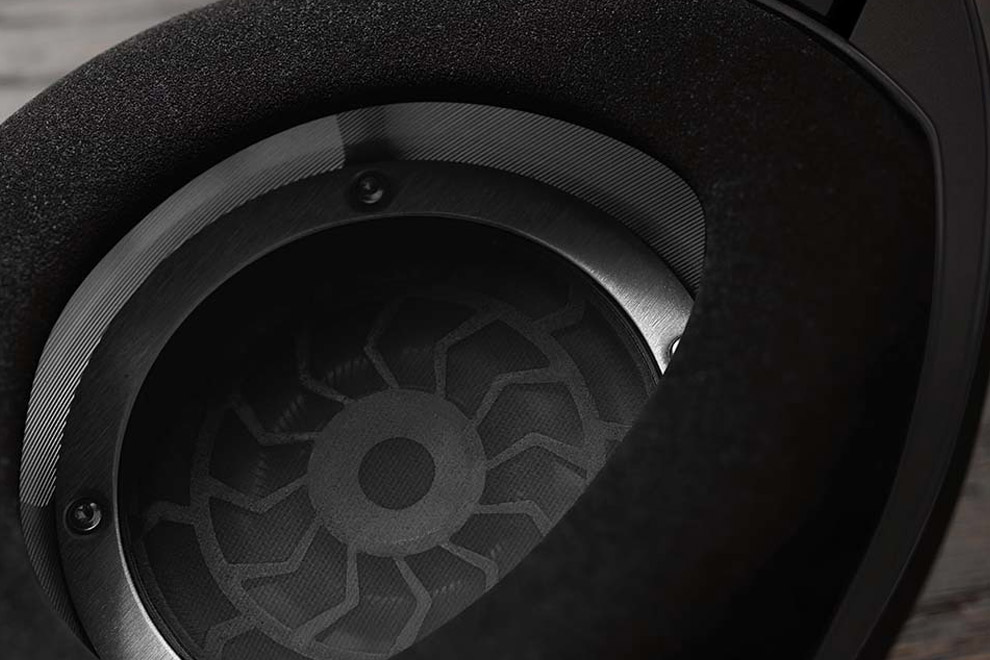
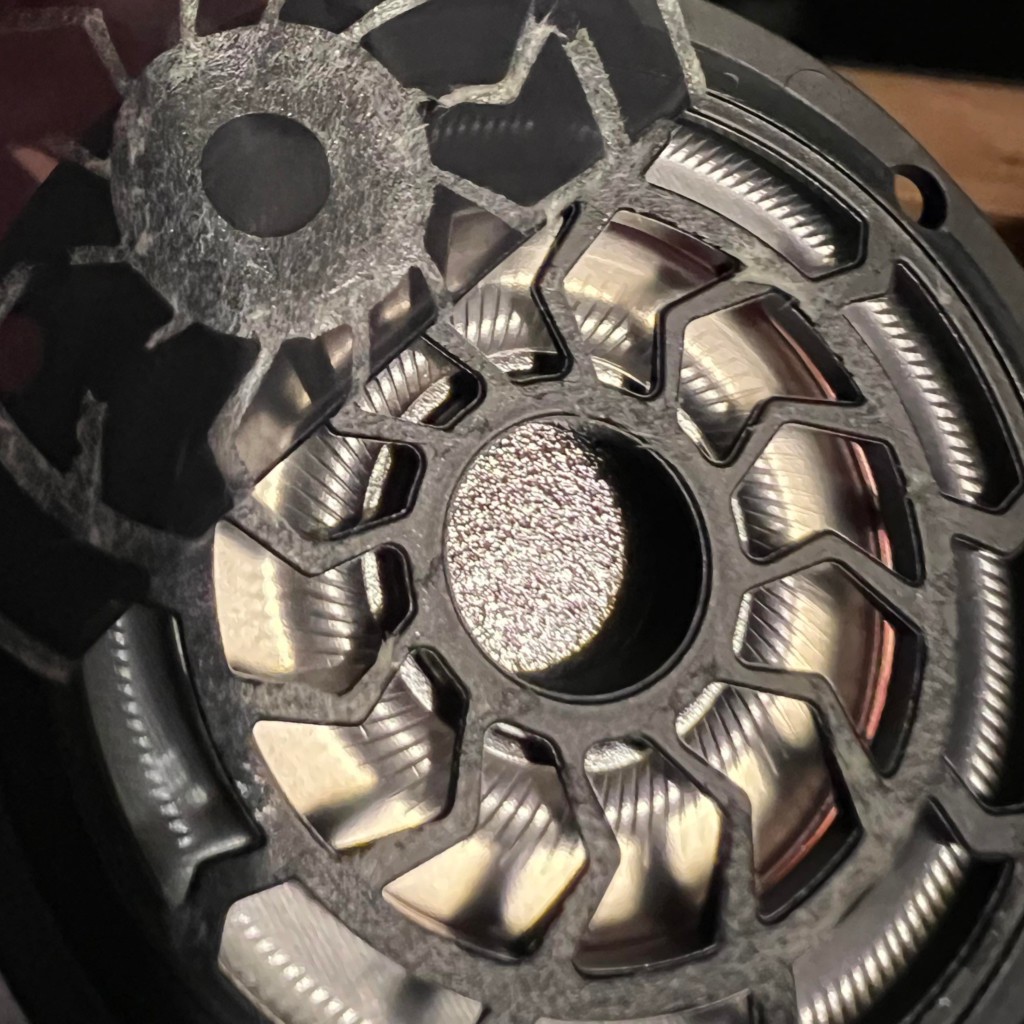
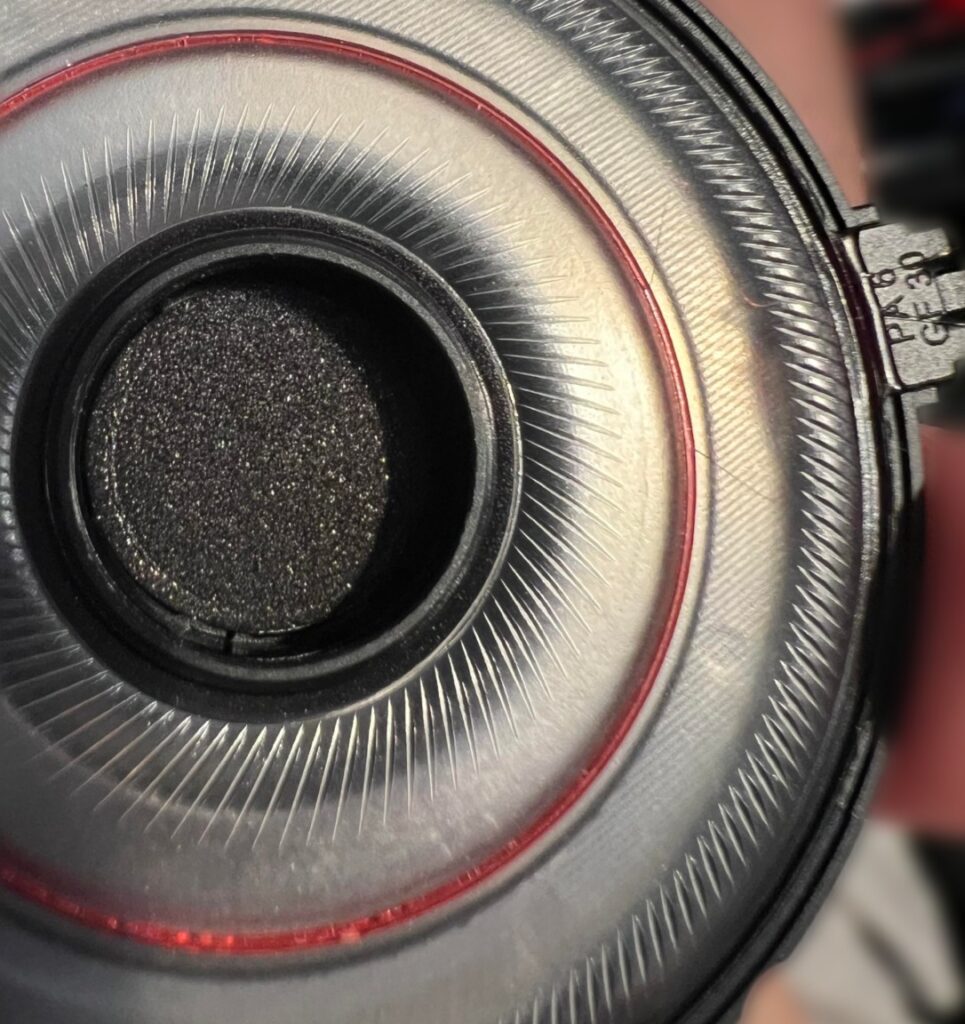
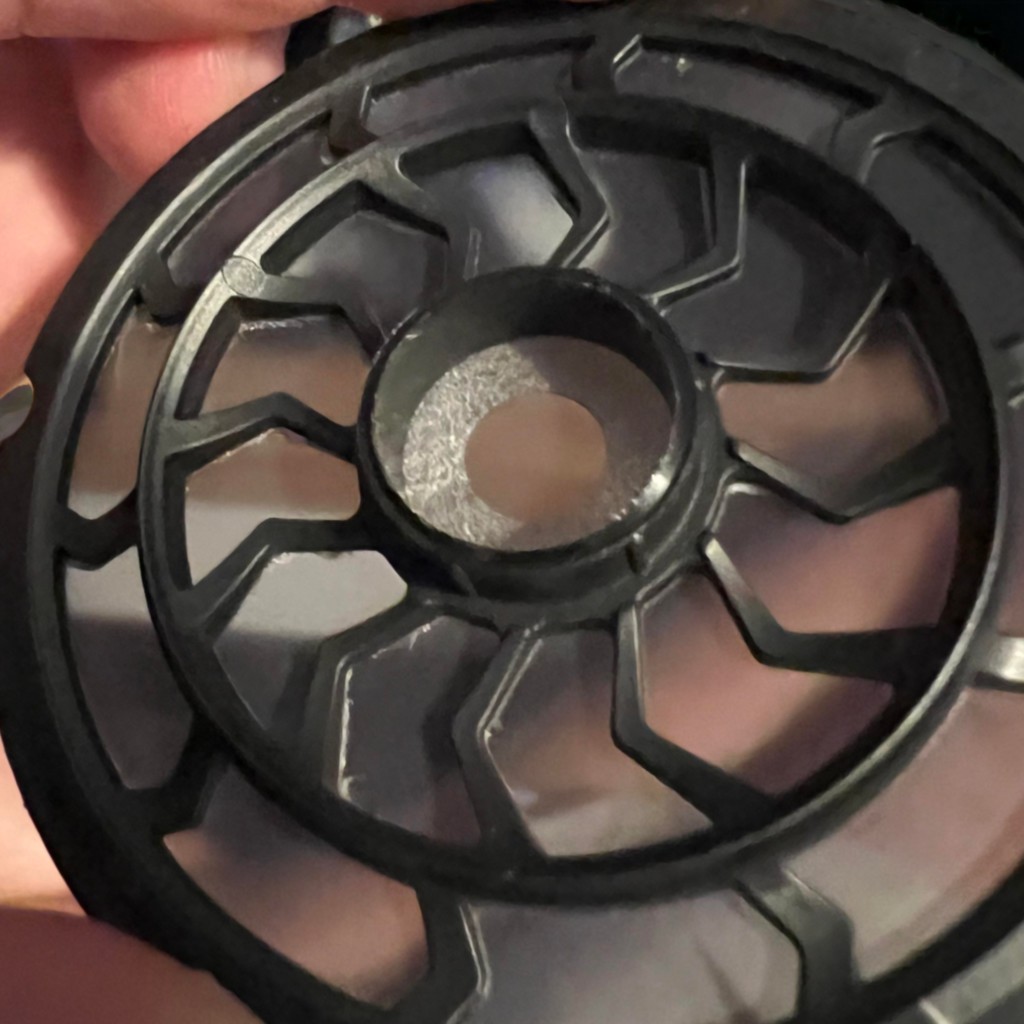
A Helmholtz resonator is a container with an opening, shaped so that resonance occurs when the container is struck by a tone of a certain frequency (pitch). The resonant frequency is determined by the volume of the container and the design of the opening. An empty bottle acts as a Helmholtz resonator. When you blow over the opening, a broad-spectrum signal is formed, but only the part of the signal that “matches” the resonance frequency is amplified, and you get a pure tone. In the HD800S, however, the resonance chamber is designed to reduce some frequencies rather than to amplify them. Such dampening resonators are used in various applications, like, e.g., exhaust systems in cars.
The headphone enthusiast community took the release of the HD800S as a challenge, and rather than ditching their HD800’s, they started to imitate the Sennheiser solution. In France, an enthusiast came closer to the HD800S than anyone else. This mod became known as the “French mod,” and the unit placed in the driver’s centre was called the Super Dupont Resonator, aka SDR. It’s a small cylindrical unit made of various materials with a hole in it, creating a resonance chamber quite like the HD800S solution. Initially, they used a specific IEM ear tip cut to fit.
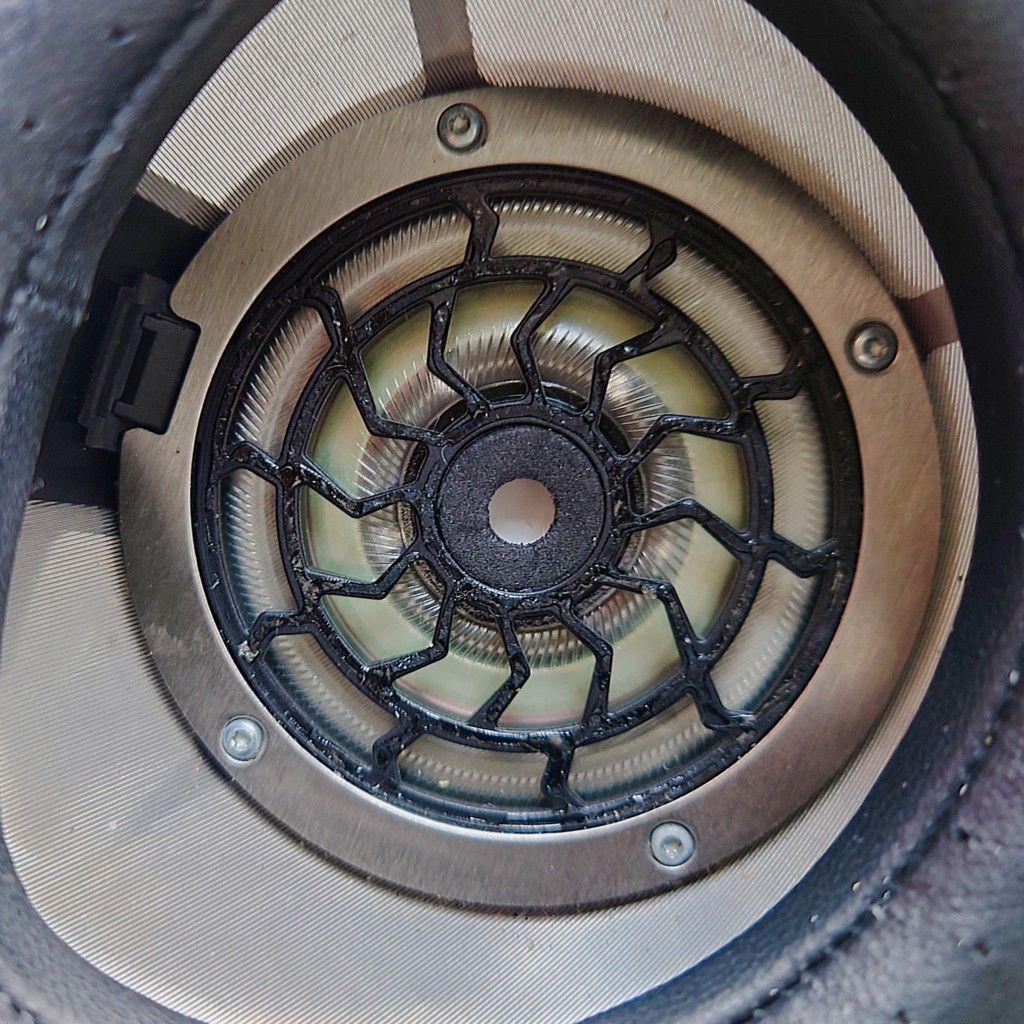
Later they made a hollow “sandwich” with creatology foam with a hole on top, a felt ring in the middle, and thick paper (bristol) at the bottom. The central figure in developing and sharing this mod was a French enthusiast with the nickname Sorrodje, who is active on superbestaudiofriends.org (aka SBAF), HeadFi.org, and the French forum tellementnomade.org. The HD800 headphones with this mod installed are widely known as HD800 SDR. There are other popular mods as well. One of the newer ones is called the MAXX mod. I wrote a review about that mod last year here.
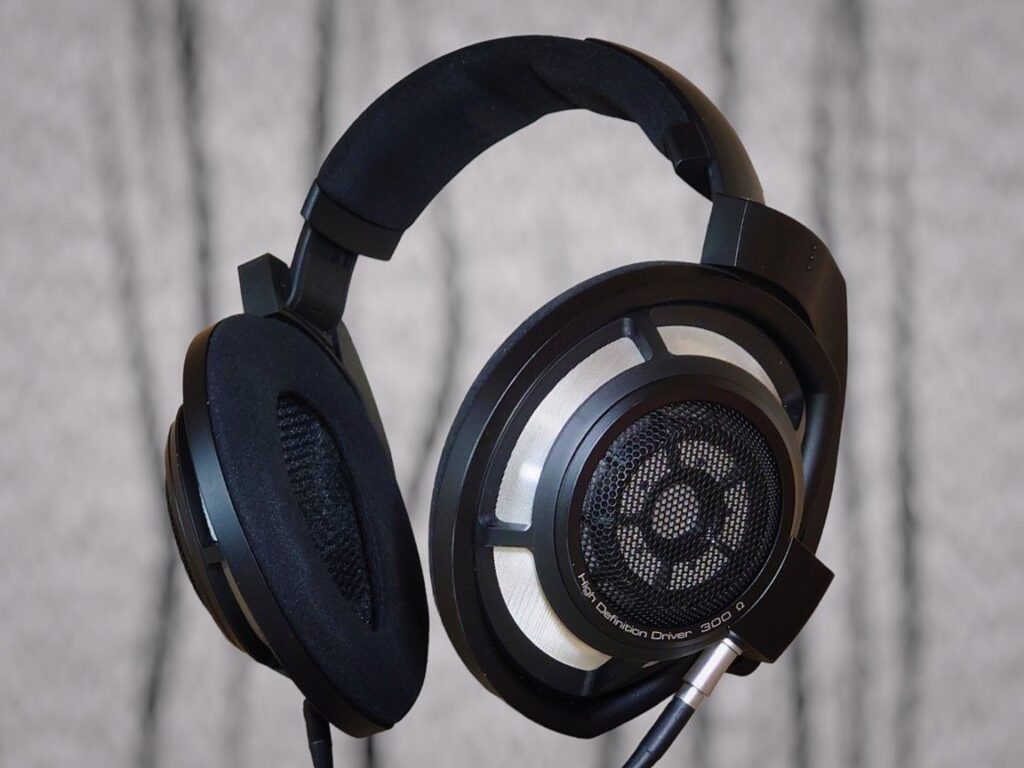
SENNHEISER HD800S SPECIFICATIONS
- Transducer type: 56mm ring radiator dynamic driver
- Sensitivity: 102 dB (SPL @ 1 V)
- Impedance: 300 Ω
- Frequency response: 4 Hz – 51,000 Hz
- Total harmonic distortion (THD): < 0.02 % (1 kHz 1 Vrms)
- Cables: 3m cable with 6.35 mm plug and 3m cable with balanced 4.4mm Pentaconn plug
- Weight 330 g
- Made in Germany.
BUILD QUALITY, DESIGN AND COMFORT
The HD800S is well-built, though it is primarily made of plastic. It is lightweight, features large ear cups, and is very comfortable to wear. The pads and headband are made with a synthetic microfiber material and are user-replaceable with a proprietary shape and click-on mechanism. Many third-party options are available, and pads and headbands from the HD800 and HD820 models are compatible with the HD800S.
The cable uses proprietary connectors unique to the HD800, HD800S, and HD820. I wish they’d used something more commonplace, but there’s still plenty of 3rd party options available.
The HD800S comes with two 3 m (9 ft) cables, one with 6.35 mm TRS and one with balanced 4.4 mm Pentaconn.
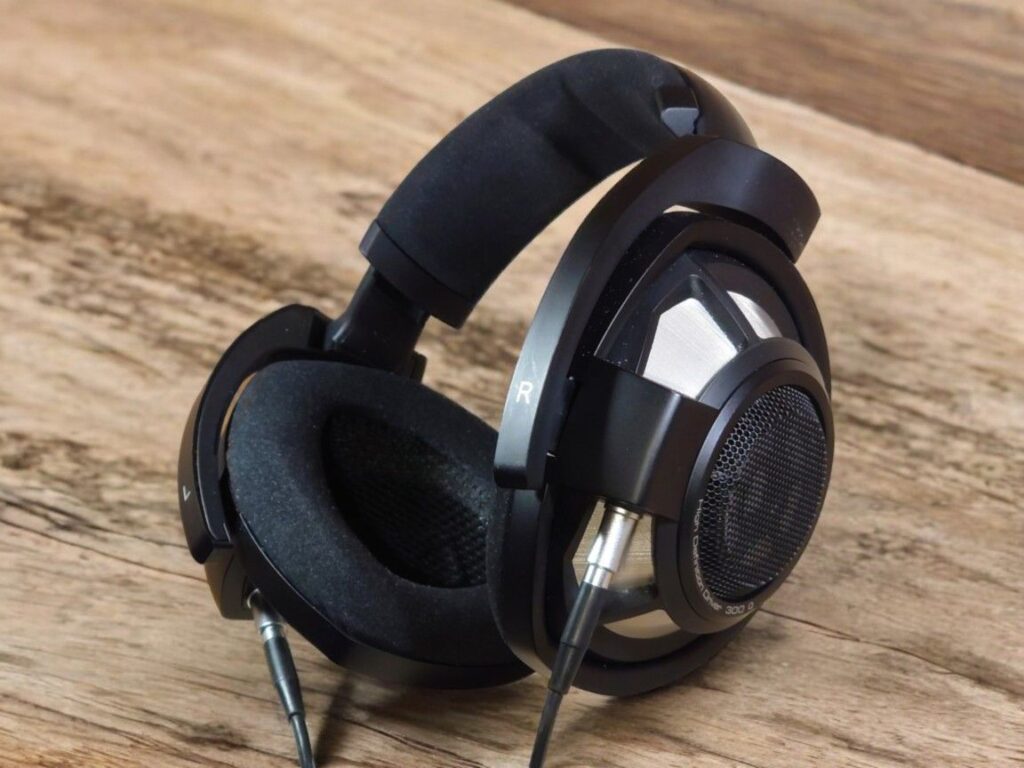
STANDALONE LISTENING IMPRESSIONS
Comparison can sometimes overshadow the qualities of what you’re listening to. Certain gear might sound excellent on its own, but may seem lacking when compared directly to others. Thus, I always start by listening to some familiar tracks with the review item before diving into direct comparisons.
I chose to use two amplifiers for this session. The Mytek Liberty THX AAA Ampamplifier is an excellent match with the HD800S. It’s very neutral without sounding clinical. The Sparkos Labs Gemini hybrid tube amplifier is also fabulous with the HD800S, adding a dose of warmth and tube glow without much colouring. I prefer the Gemini because I find it to sound more dynamic, but the Mytek Liberty is a very good solid state option.
He are my track-by-track impressions, without EQ:
Jambi by Tool
The guitars are very textured. Even though the bass is polite in presence, it is high in detail. The vocals are nuanced, but not very upfront. The general presentation is very neutral sounding.
Golden Age by Beck
The acoustic guitar is crisp and clear, the percussion snappy, the bass nicely present, and the soundstage is open. Beck’s vocals are polite in presence but nuanced and neutral sounding. The abundance of ambient sounds are presented in an articulate manner and the individual sounds are easily identified.
Lazarus by David Bowie
The bass is solid but not overwhelming, and the drums are quite snappy. The treble is bright but not overly crisp; I find it rather ethereal. Bowie’s vocals are detailed and nuanced but somewhat polite. The whole presentation is very detailed-sounding but not very upfront. The soundstage is large, but also a bit diffuse and distant.
Come Away With Me by Norah Jones
The presentation is nicely balanced; the vocals are not the most energetic, but they are present, and the piano is clear. It sounds very nice, but it’s a bit laid back.
Yoshimi Battles the Pink Robots by The Flaming Lips
The guitar is clear and detailed, and the bass drum is full of texture. The vocals are presented in a neutral way, and the ambient sounds are rendered with clarity without standing out in the mix in an artificial way.
Summer 3, Vivaldi Recomposed by Max Richter
Classical music is definitely very enjoyable on the HD800S, and this piece is no exception. The soundstage is large, and the different string instruments are rendered with detail and texture. It sounds very neutral.
Aquela Muhler by Vinicius Cantuaria
The acoustic guitar is beautiful, and the bass is very solid. The percussion is delicately rendered. Vocals are relatively polite sounding, but very smooth and nuanced. Ambient sounds are nicely rendered.
As Before by Olga Konkova
The cajôn isn’t especially powerful; I like a bit more thump in the bass. The percussion is snappy, and the piano is clear. Some imperfections on the recording are revealed very clearly, which highlights the double edged sword with detailed and articulate treble.
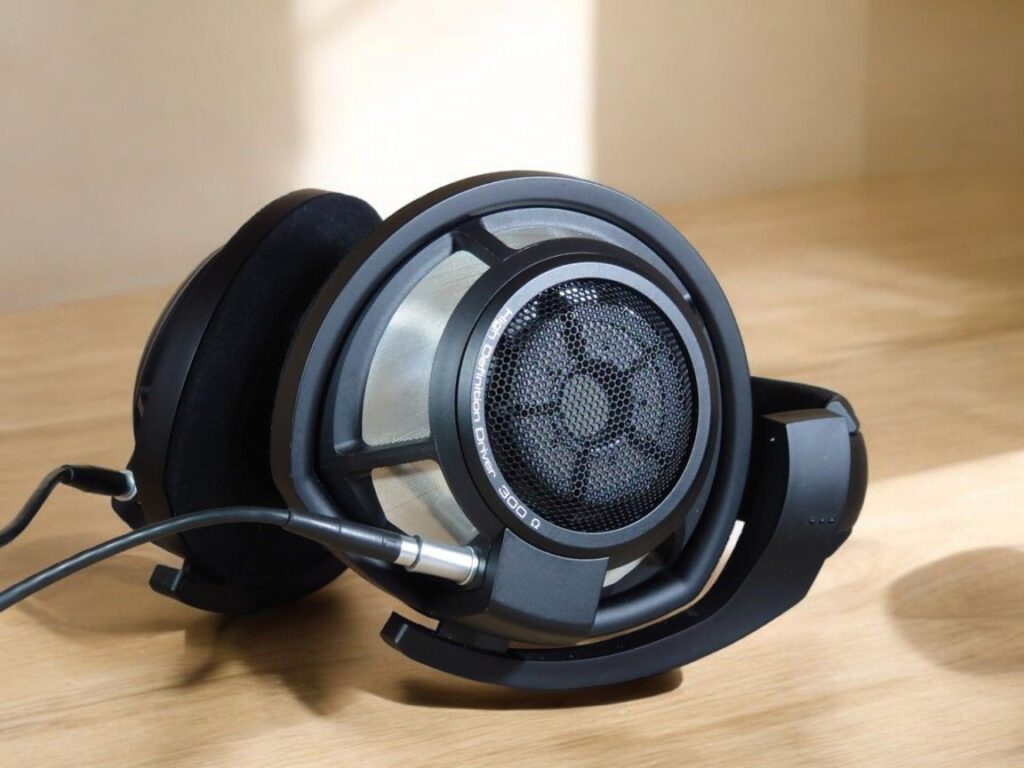
WRAPPING IT UP
Sound Signature
The HD800S has a balanced and neutral sound signature with a bright upper end.
Treble
The treble is clear and expansive, well-defined and airy. It can sometimes come across as slightly bright and, to some, even fatiguing. With a good amplifier match, this is less problematic.
Midrange
The midrange is well-balanced and neutral, and neither excessively emphasized nor recessed. Vocals and instruments are rendered truthfully. However, I do miss some more presence in the 2-4 kHz range, and with vocal based music, I prefer this range adjusted up a notch with EQ.
Bass
The bass is present and well-defined, without overshadowing the mids or highs. It is tight, accurate, and well extended but rolls off gently in the sub-bass. The bass can handle some EQ and for some music, this will be very welcome.
Soundstage and Imaging
The HD800S is renowned for its expansive, immersive soundstage, offering a spacious and holographic listening experience. However, if you prefer a more intimate presentation, the HD800S might feel a bit distant, positioning you further back in the concert hall rather than right on stage with the performers.
Detail, Dynamics, and Timbre
The Sennheiser HD800S excels at rendering fine nuances and provides a clear, precise listening experience.
It can certainly throw a punch, but the HD800S strives for neutrality and balance and is stronger at microdynamics than macrodynamics.
When it comes to timbre, the HD800S reproduces the tonal quality of instruments and voices accurately, neuturally, and without exaggeration.
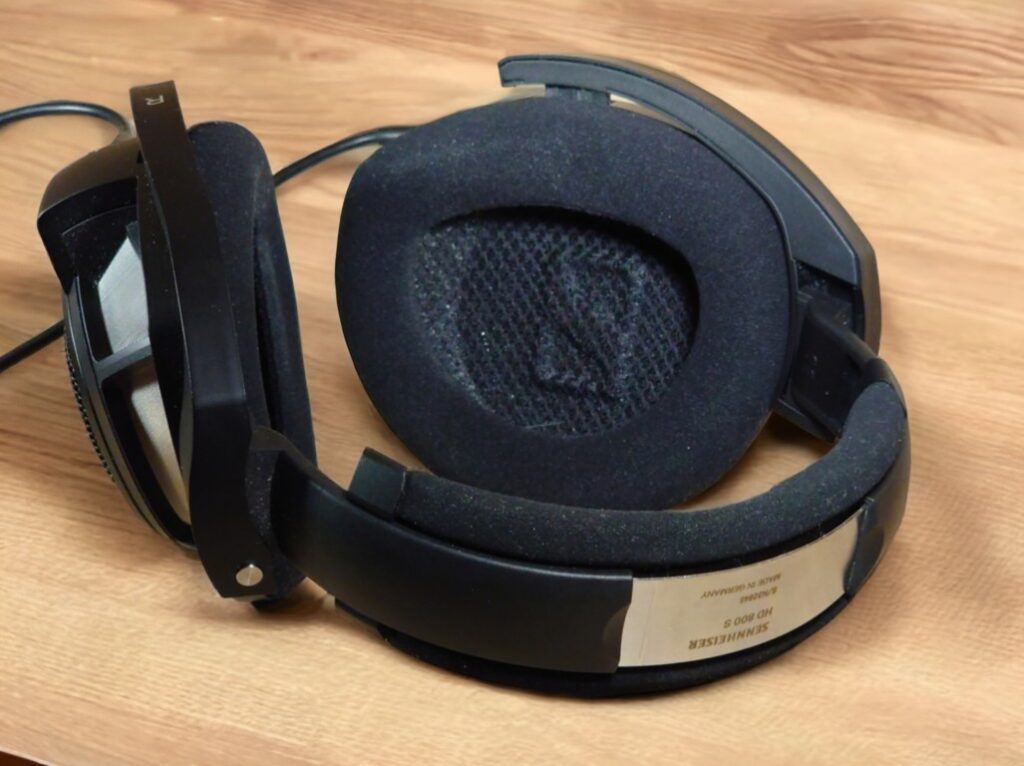
COMPARISONS
FOCAL UTOPIA OG vs. HD800S
Launched in 2016, the original Focal Utopia soon became known as one of the best headphones in the world. It is a dynamic driver headphone with a pure beryllium diaphragm. The impedance is 80 ohm. It was replaced by a slightly different version in 2022, without any official name change, thus it is mostly referred to as “Utopia 2022,” the original being “Utopia OG.”
Starting with the treble, I find the Utopia to have more treble body and a more energetic presence. It’s crisper-sounding yet very delicate. The HD800S feels less weighty and more ethereal, with more upper-treble presence giving a better sense of “air,” but it is more fatiguing to me. Both have high levels of fine treble detail, but the treble of the Utopia is more dynamic.
The Utopia also has more midrange presence and energy. The upper midrange is especially more pronounced. Vocals, pianos, trumpets, etc. all have more body. The HD800S is more distant and a bit fleshed out. There’s more midrange dynamics with the Utopia, but they both have excellent fine detail.
When it comes to the bass, the Utopia also here has more body, presence, and punch. It’s not so much that it has more quantity; the bass has more punch and weight. Both have good bass detail and texture. They both roll off gradually in a similar fashion.
The soundstage of the HD800S is significantly wider. However, compared to Utopia, the imaging is more diffuse. The Utopia is more holographic and more precise, but with a smaller stage.
Wrapping it up, the HD800S and the Utopia have a lot in common. They are both technically stellar, with a high level of detail. Both are tuned rather bright. All in all, however, I find the Utopia the better headphone, but I can easily imagine that others can prefer the HD800S. It would also depend on the amplifier match.
Audio preferences are subjective. These are both true audiophile-level headphones, even though I find the Utopia a step up in most regards, especially because I find it to have more tonal weight.
Buy on Amazon: Focal Utopia
Here’s my full comparison:
HIFIMAN HE1000V2 vs. HD800S
The Hifiman HE1000v2 is a planar magnetic headphone that was Hifiman’s flagship until the Susvara came along. Last year, the HE1000v2 got the Hifiman “stealth magnet” upgrade, and the newest model is called HE1000 Stealth, although the v2 is still available and popular.
Both headphones need a good amplifier match to perform at their best. The HE1000v2 requires quality power to fully unleash its dynamics.
In terms of sound signature, these often aren’t too far apart. It is quite track-dependent because they have variations in the frequency response that are not big enough to say that they are constantly very different.
The HD800S is, as mentioned, infamous for being on the bright side, with a detailed treble that can be fatiguing but is smoother with a tube or hybrid amp. The HE1000v2’s treble is also bright, but less intense, with more weight and less brightness.
When it comes to the midrange, they’re both detailed and revealing, but the HE1000v2 offers more energy and is more up front with a more warmer tonality.
The HE1000v2 truly excels in bass quality, offering more detail, presence, and linearity. The HD800S has quality bass, but not as good as the HE1000v2.
The HD800S is famous for its soundstage, but the HE1000v2 keeps up: Properly driven, the HE1000v2 is just as spacious, and sometimes even more so, than the HD800S. In other words, they are both top-of-the-line in this regard. Imaging is excellent on both; they create a great holographic listening experience. The HE1000v2 might be wider, the HD800S deeper. It depends on the track and what frequencies are dominant.
When it comes to tonality and timbre, I mostly prefer the HE1000v2. I’m generally a fan of the Hifiman tuning. However, I often find the HD800S surprisingly similar.
Buy on Amazon: Hifiman HE1000
Here’s my full comparison:
DENON AH-D9200 vs. HD800S
Denon’s flagship, the AH-D9200, is a (semi) closed-back model, making it a bit different from the open-back HD800S, but it’s still a relevant comparison. Both use dynamic drivers and represent their brands’ flagship offerings. The AH-D9200 has a low impedance of 24 ohms. They have different sound signatures, with the D9200 sounding warmer and bassier, but still quite neutral.
Starting with the treble, they both have good detail, presence, dynamics, and extension. The HD800S is, however, clearer and presents more fine detail. The D9200 isn’t a dark-sounding headphone but has a more laid-back treble than the HD800S – which, after all, most headphones do.
When it comes to the midrange, both are highly detailed. The D9200 has more midrange emphasis, and I find its timbre to sound more organic.
The D9200 undoubtedly has more bass, although I find it nicely balanced. However, it’s a bit bloomy and loses some detail. The HD800S often has less bass than desired, but the quality is higher. There is more texture and detail, and it’s more precise.
Unsurprisingly, the HD800S has the biggest soundstage. However, the D9200 does not have an especially small sound stage per se, but it is more intimate. The instrument separation and imaging are very good.
Wrapping it up, the D9200 has more bass, more midrange, and a less crisp, but not polite, treble. I find the tuning very natural and inviting. It’s smooth-sounding yet with lots of details. The HD800S, however, feels more technically able. The huge soundstage, the extreme amount of detail, and the micro-dynamics are a level or two above the D9200. So the HD800S wins on detail retrieval and soundstage, whereas the D9200 has a warmer sound, which, to me at least, gives better timbre and a more natural tonality.
But on Amazon: Denon D9200
Here’s my full comparison:
FOCAL CLEAR MG vs. HD800S
The Focal Clear MG is the successor of the original Clear and the “budget version” of the before-mentioned Utopia. It’s an open, dynamic driver design with an impedance of 55 ohms. The sound signature is generally warmer than the HD800S.
In the treble region, the HD800S has more fine detail, but the more laid back Clear MG is more forgiving and organic.
When it comes to the midrange, I find the Clear MG has more body and weight, with a warmer tonality. Midrange detail might be a tad better with the HD800S, but in terms of quantity it feels recessed in direct comparison.
The bass is quite different, and the macro dynamics and slam factors are definitely better with the Clear MG. When it comes to revealing textures and analyzing detail in the bass, the HD800S is, however, better.
In terms of soundstage, the HD800S undoubtedly is larger and more holographic sounding. Even though it cannot match the HD800S, the Focal Clear MG has a wide and open soundstage with nice imaging.
In summary, the Clear MG delivers more body and weight throughout the spectrum, offering a visceral and punchy sound and a warmer tonality. In contrast, the HD800S focuses on neutrality and microdynamics, providing a more analytical and refined listening experience.
Buy on Amazon: Clear MG
Here’s my full comparison:
AUDEZE LCD-X 2021 vs. HD800S
The LCD-X is a 16-Ohm planar magnetic headphone. It’s been through significant changes over the years, and the current version is referred to as “2021” because all LCD-X’s made after that are the “new” version, which sounds significantly different from the original launched in 2013.
The LCD-X and HD800S have distinct sound signatures. Unlike the often dark and recessed treble of the classic Audeze house sound, the LCD-X offers a natural and well-resolved presentation. In contrast, the HD800S is highly detailed in the treble but can be more intense and fatiguing, which may require lowering the volume and affecting the overall listening experience.
Both the LCD-X and HD800S offer excellent midrange detail and resolution. The HD800S presents a brighter sound with a more pronounced upper midrange, making vocals, saxophones, and pianos appear sharper. While neither headphone has an exaggerated midrange, the LCD-X sounds more natural to me. The HD800S, with its crisper sound aided by its pronounced treble, often gives a greater sense of midrange detail.
The LCD-X boasts more pronounced, textured, and tactile bass, making it superior in this regard. Its bass is linear and solid without being exaggerated. While the HD800S also delivers good-quality bass, it is not in the same league. Further, its treble can become overly intense, often necessitating a lower volume, which of course affects the bass. This is not an issue with the LCD-X, which can be played louder.
When it comes to soundstage and imaging, the HD800S is clearly better. However, I also find the LCD-X to have great imaging, layering, and separation. As the HD800S, it’s very holographic, but it’s not as wide, tall, and deep.
Overall, while I appreciate the HD800S for its broad soundstage and detailed, analytical presentation, I prefer the tuning of the LCD-X. The HD800S excels in highlighting details and textures, but the LCD-X, though perhaps less detailed and certainly more intimate, offers a more organic sound.
Buy on Amazon: LCD-X
Here’s my full comparison:
SENNHEISER HD660S2 vs. HD800S
If leaving out the astronomically expensive (but mind-blowingly wonderful-sounding) HE1, the 300-ohm HD660S2 is Sennheiser’s second most expensive headphone. However, the price gap is significant, with the HD660S2 costing close to a third of the HD800S. They also sound very different, with the HD660S2 being more midrange and midbass oriented.
The HD660S2 features a less intense treble compared to the HD800S. While the HD800S excels in treble resolution, it can be more fatiguing. The HD660S2 offers comparable midrange clarity with better presence and body. Its bass is generally more prominent, with greater weight and punch, although the HD800S has a more linear sub-bass with less roll-off. In terms of bass quality and resolution, the HD800S is superior.
The HD800S offers a soundstage that is deeper, taller, and wider, with superior instrument placement and more space between elements, resulting in a highly holographic experience. However, it does sound a bit more distant than the HD660S2, which is more “on the stage” rather than 10th row.
In conclusion, the HD660S2 highlights midrange and midbass, delivering greater macro-dynamics, punch, and presence. In contrast, the HD800S excels in microdynamics and fine details, offering a more refined and nuanced listening experience.
But on Amazon: Sennheiser HD660S2
Here’s my full comparison:
AMPLIFICATION
The HD800S, being almost identical to its predecessor, is very dependent on the amplifier. I have tried many. For this review I spent most time with the following:
Bryston BHA-1
This solid-state amp is known for its slightly warm yet neutral and tight sound, excelling both in micro-details and dynamics. However, solid-state amplifiers can sometimes make the HD800S sound a bit clinical and bright. While the BHA-1 is among the better solid-state options I’ve tried for the HD800S, it may still not tame the HD800S’s inherent brightness enough for all.
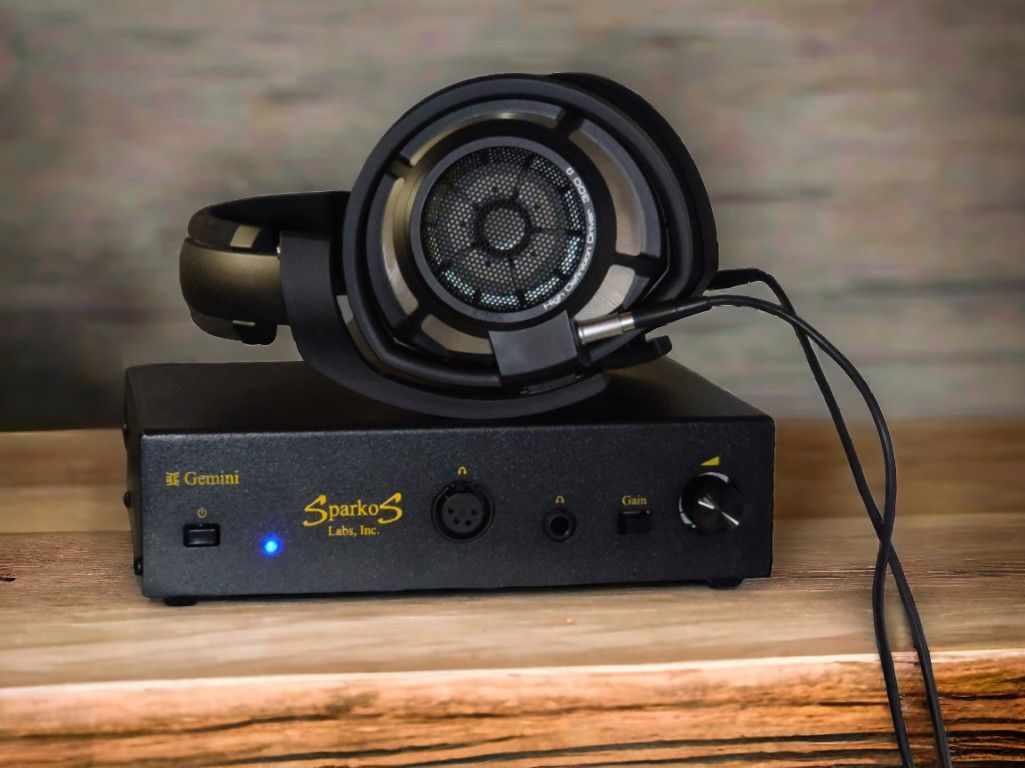
Sparkos Labs Gemini
The Gemini offers a more organic and richer sound compared to the BHA-1. For me, it reduces treble fatigue, provides a sweeter midrange, and adds a fuller bass, making it a pleasing alternative to the more clinical sound of many solid-state amps.
Woo WA22
This all-tube transformer-coupled amplifier provides an even richer tonality than the Gemini without sacrificing detail. It offers an organic sound that many find preferable, addressing the HD800S’s treble peak more effectively. The Gemini sits between the tube warmth of the WA22 and the precision of solid-state amps like the BHA-1.
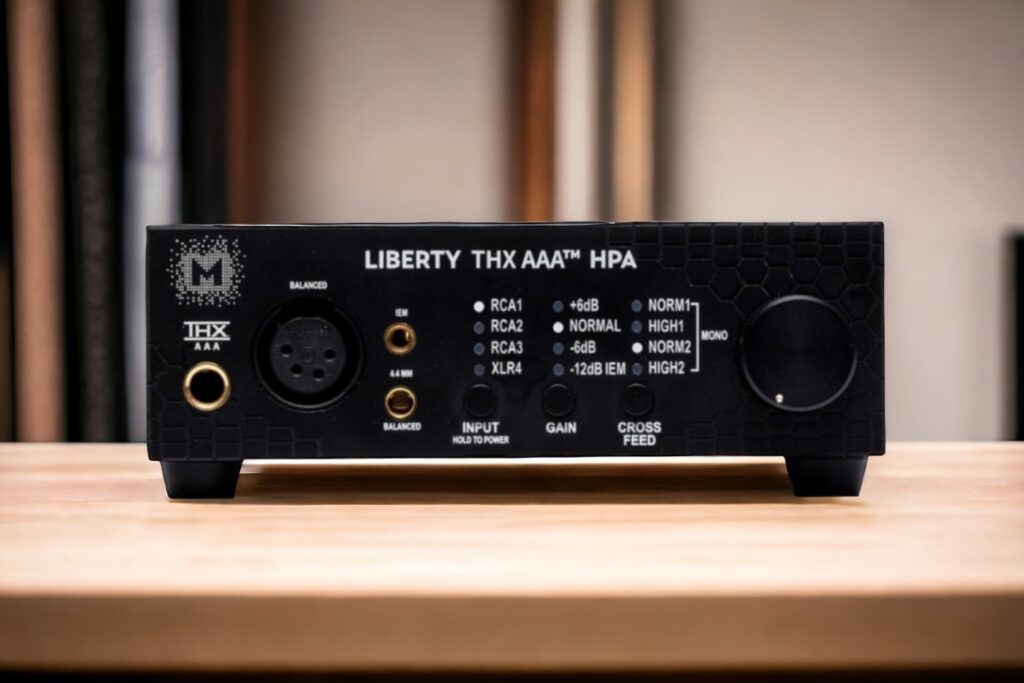
Mytek Liberty THX AAA Amp
This compact solid state amp sounds surprisingly similar to the Gemini, but they’re not identical. The Gemini is still sweeter and slightly more dynamic. Nonetheless, the Liberty offers excellent control and a slightly warm tonality. Mytek’s DAC/Amps consistently pair well with the HD800 series, and the Liberty is no exception.
MONOLITH 887 THX AAA AMP
I found this amplifier to sound surprisingly good and quite close to the much more Mytek. It’s not all the way there, and the Mytek has more functionality, but consider me impressed.
All of these amplifiers are great with the HD800S. While the WA22 provides the most organic sound, the Gemini serves as an excellent alternative. The BHA-1 and Liberty also deliver solid performances, with the Liberty being slightly warmer of the two.
Over the years, I’ve tested numerous amplifiers with both the HD800 and HD800S. Given their shared driver and housing design, amplifiers that excel with the HD800 always perform well with the HD800S.
For a more extensive comparison of various amps for the HD800 and HD800S, you check out my extensive review here:
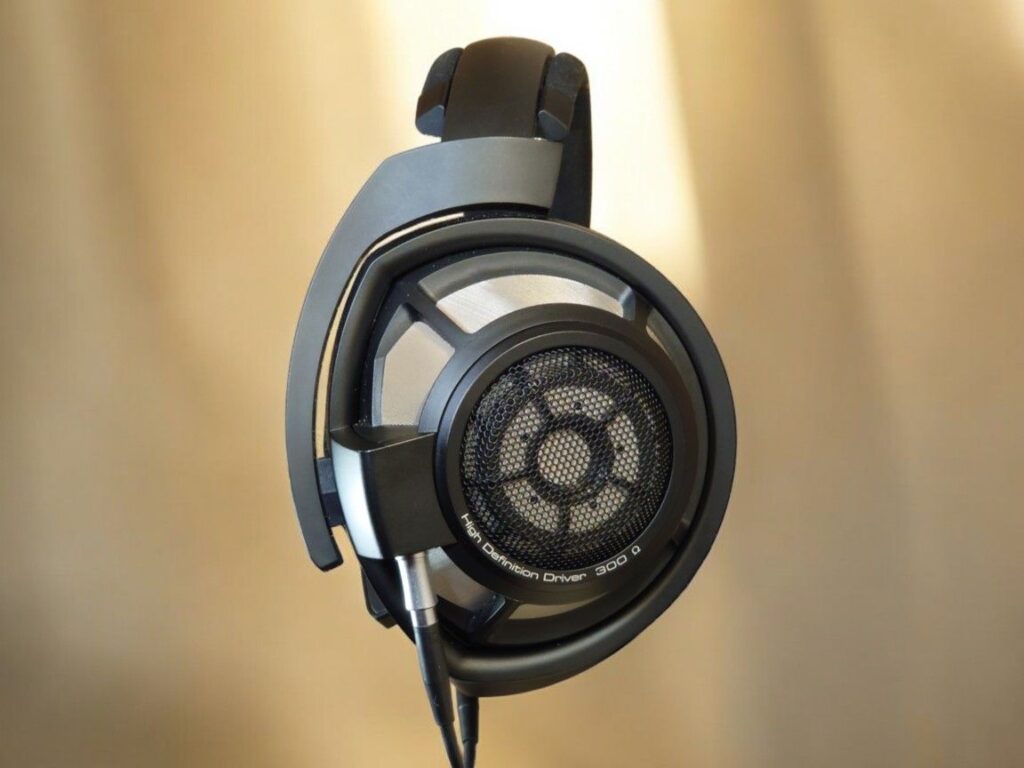
CONCLUSION
The HD800S remains relevant in 2024, offering a unique experience unmatched by other headphones. It continues to be a reference for neutrality, technical performance, and soundstage. It benefits from careful amplifier matching, but it need not be costly to achieve good results. The growing availability and use of EQ makes it easier than ever to tailor its tuning to personal preferences. Last, but not last, it’s still along the most comfortable headphones available.
Buy on Amazon: Sennheiser HD800S


